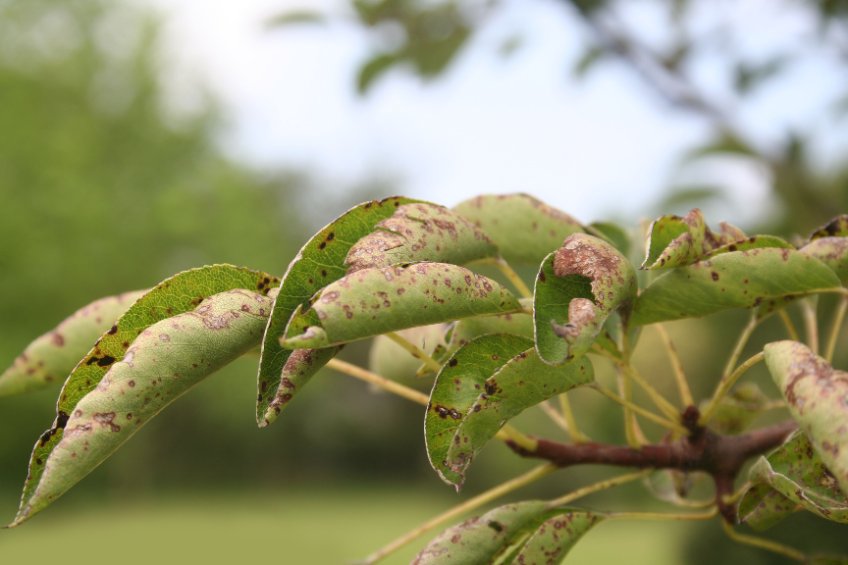Urban trees typically only live a few decades, whereas the same tree in the forest could live for over a hundred years. City stressors take a toll on tree health, even more so than disease or insect infestations. According to the Arbor Day Foundation, most urban tree issues are a result of improper planting, watering too little or too much, soil compaction, exposure to road salt and pollution, and/or construction near tree roots. It’s important to watch for signs of stress in trees on your property, and not just for looks. A failing tree can be a safety hazard and is a liability. The best way to prevent stress is to plant properly, water adequately, and prune carefully. Here are some stress signs to look for in your trees:
- Canopy dieback – One of the first indicators of tree stress is sparse canopy dieback. If you notice sparse foliage or a lot of dead branches inside the tree, it’s time to take action.
- Leaning trees – A little leaning is natural over the life of a tree. However, if you notice a sudden change, especially after a strong windstorm, that is likely going to spell trouble. Get a professional to check it out.
- Cracking or splits – When a trunk of a tree cracks or splits, especially if it’s large, typically indicates decay. Smaller splits can heal okay, but a severe crack may call for the removal of a tree.
- Leaves are dropping – If you notice leaf loss at the wrong time of year, the tree is trying to conserve its resources as a way to manage the stress. Usually this is a result of extreme heat, but it can also be from too much or too little water or a disease.
- Two trunks – a tree that has two dominant trunks looking like a very clear “V” indicates stress. Over time, bark will get wedged between the two stems, pushing the trunks father apart and eventually leading to breakage. Depending on the tree’s location and severity of the splitting, you may need to get the tree removed. If the tree is young and you notice this, you’ll want to assess it quickly before it gets too big.
- Spotted leaves – Tree fungus often shows itself with spotted leaves. A fungus usually requires a treatment plan, which can be worked out with an arborists or tree expert.
- Brown or wilting leaves – On a transplant tree, this is normal because it may go through transplant shock. Remedy this by giving them water and applying mulch. On older trees, the same process will help out the tree, but with more consistent, longer, deeper waterings.
- Mushrooms – If you notice mushrooms growing at the base of a tree, it can be an indication of rotting or decay. If you consistently notice mushrooms forming, you’ll want to reach out to a professional for advice.
If you’re worried about a tree on your property, it’s always better to address the problem quickly. Some issues remedy themselves, but not many. Timber Ridge Tree Service is your local expert for all tree-related concerns.
